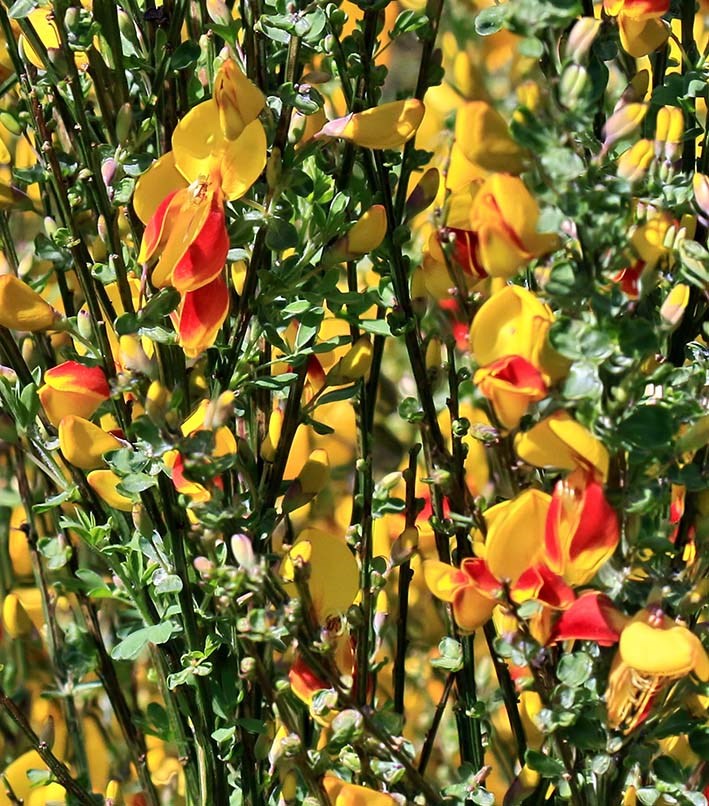If your broom is in bloom don’t fret, the Broom Busters are here to help. Many locals will recognize the spiny green shrubs with thick yellow flowers that pepper our properties, Crown land and roadsides throughout Halfmoon Bay in the spring but may not understand the risks involved with this invasive plant. Scotch broom is a perennial shrub originally from Europe that made its way to B.C. in the mid-19th century, according to the BC Invasive Species Council, as it was used to pack whiskey cases for gold camps. Once this packing material was discarded, the Scotch broom was able to take root and start its invasion on our local soil. Mature plants can produce upwards of 3,500 seed pods, which each produce 5-12 seeds that remain viable for up to 30 years. Its stems grow year-round, it easily outcompetes native plants and reduces species favoured by native birds and butterflies. Scotch broom is also allelopathic, meaning the roots exude chemicals that negatively impact the growth, survival and reproduction of other plants nearby. The high oil content of this plant, along with the amount of dead wood in mature plants, creates a substantial wildfire hazard. Thickets of unmanaged mature scotch broom are potential ground fuels that could ignite and spread quickly in our drier seasons, especially if a monoculture is established, taking out more fire-resistant native species. If that weren’t enough for you to consider going to war with this invader, the seed pods are also toxic to young children and some animals.
So, what can be done? You can do your part! First, go after single plants, pioneers and small infestations to prevent further spread. If the broom is small and not blooming, you can pull it out. It is important not to let the broom make more seed, cut off all the yellow flowers before seed pods form if you do not have the time to deal with the larger plant. It is important you do not spread the seeds, if the pods have already formed, they will ripen even after the plant is cut. To cut the Broom in bloom, or just before, use loppers to cut it down to, or just below, ground level. Ideally, cut just below the first rootlet, usually within an inch of the surface. If the broom is so large that it can’t be cut at ground level, cut off all the manageable branches you can. Success is greatly improved by splitting the cut stem, large broom plants die easily.
From May 10 to 24, local volunteers through the Halfmoon Bay Community Association will be picking up and destroying cut broom locally. Consider taking the time to manage the broom in your own backyard and the Broom Busters will take care of it. Once your broom has been gathered in a pile near the road for easy pick up, please contact our local Broom Busters at [email protected] with your address and phone number. You can also report large broom infestations that you know of in the area to them or sign up as a volunteer. We have seen substantial mitigation locally over the years because of consistent and coordinated efforts by our local volunteers.
Thank you to Elise Rudland, Mary Beth Knechtel and the Halfmoon Bay Community Association for their work on this project and for taking their time to tell me more about the Broom Busters and their aim for a broom free Halfmoon Bay.
Please feel free to contact me at [email protected] if you have any upcoming events to be featured or want to connect about all things happening in Halfmoon Bay. Kyla Trethewey, columnist and Halfmoon Bay Firefighter #36.



